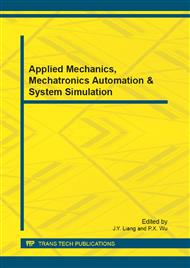[1]
N. Bailey, The Mathematical Theory of Infectious Disease and Its Applications, 2nd, London: Griffin, (1975).
Google Scholar
[2]
Anderson,R. & May,R., Infectious disease of humans, dynamics and control, Oxford: Oxford University Press, (1995).
Google Scholar
[3]
Chen, L. S. and Chen, J., Nonlinear Biological Dynamic Systems, Beijing: Science Press, 1993. [in Chinese].
Google Scholar
[4]
Shulgin, B., Stone, L. & Agur, Z., Pulse vaccination strategy in the SIR epidemic model, Bulletin of Math. Biol, (1998)60: 1-26.
Google Scholar
[5]
Stone,L., Shulgin,B. & Agur,Z., Theoretical examination of the pulse vaccination policcyin the SIR epidemic model, Math. Computer Modelling, 2000, 31: 207-215.
DOI: 10.1016/s0895-7177(00)00040-6
Google Scholar
[6]
D'Onofrio, A. Stability properties of pulse baccination strategy in SEIR epidemic model, Math. Biosci, 2002, 179(1): 57-72.
Google Scholar
[7]
D'Onofrio, A, Pulse vaccination strategy in the SIR epidemic model, global asymptotic stable eradication in presence of vaccine failures, Math. Comput. Model, 36(2002), 473-489.
DOI: 10.1016/s0895-7177(02)00177-2
Google Scholar
[8]
Zhou, Y. C. and Lin, H. W., Stability of periodic solutions for an SIR model with pulse vaccination, Math. Comput. Model, 38(2003), 299-308.
Google Scholar
[9]
Bsinov,D. and Simeonov,P. Impulsive Differentical Equation: Perioelic Solutions and Applications(Longman Scientific & Technical), (1993).
Google Scholar


